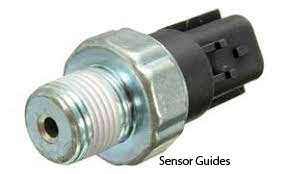Toyota AC Flow Sensor Bypass; A Must-Read Guide
The efficiency and performance of the air conditioning system in a Toyota vehicle play a vital role in ensuring a comfortable driving experience. One crucial component that contributes to the smooth functioning of the AC system is the AC flow sensor.
This article explores the significance of the AC flow sensor in Toyota vehicles and provides insights into bypassing this sensor when necessary.
Table of Contents
Understanding the AC Flow Sensor
What is an AC Flow Sensor? The AC flow sensor, also known as the AC pressure transducer, is a sensor that monitors the flow and pressure of the refrigerant within the air conditioning system. It provides critical data to the vehicle’s AC control module, enabling it to regulate and optimize the cooling performance.
The AC flow sensor measures the refrigerant flow rate and pressure, allowing the AC system to adjust the compressor speed and maintain the desired cooling output. It ensures efficient cooling while preventing potential damages caused by excessive pressure or inadequate refrigerant flow.
How AC Flow Sensor Works in Toyota Vehicles?
The AC flow sensor is integrated into the AC system in Toyota vehicles, typically located near the evaporator or condenser. It utilizes a pressure-sensitive element to detect changes in refrigerant flow and pressure, converting them into electrical signals that are interpreted by the AC control module.
Symptoms of a Faulty AC Flow Sensor
A. Reduced Cooling Performance
A faulty AC flow sensor can result in reduced cooling performance, with the AC system struggling to maintain the desired temperature inside the vehicle. The airflow may feel weaker, and the cabin may take longer to cool down.
B. Inconsistent Airflow
Another indication of a faulty AC flow sensor is inconsistent airflow from the vents. You may experience fluctuations in the strength and direction of the airflow, leading to an uneven distribution of cool air within the cabin.
C. AC System Malfunctions
A malfunctioning AC flow sensor can trigger warning lights on the dashboard, indicating an issue with the AC system. Additionally, the AC compressor may cycle on and off more frequently or fail to engage altogether.
Reasons for Bypassing the AC Flow Sensor
A. Sensor Failure and Unavailability of Replacement
If the AC flow sensor has failed and a suitable replacement is not readily available, bypassing the sensor temporarily can help restore the functionality of the AC system until a replacement sensor can be obtained.
B. Compatibility Issues with Aftermarket Parts
Some Toyota owners may choose to modify or upgrade their AC systems using aftermarket components. In some cases, these aftermarket parts may not be compatible with the original AC flow sensor, necessitating a bypass to ensure proper functionality.
C. Performance Enhancement or Modification Purposes
Enthusiasts and individuals seeking performance enhancements or specific modifications to their AC systems may opt to bypass the AC flow sensor. This allows for greater control over the cooling performance and customization of the AC system’s behavior.
Risks and Considerations
Bypassing the AC flow sensor can affect the overall functionality and performance of the AC system. The system may not operate optimally, leading to subpar cooling performance or inconsistent temperature control.
The AC flow sensor plays a role in optimizing the AC system’s efficiency, including its impact on fuel consumption. Bypassing the sensor may lead to increased fuel consumption, especially if the system operates in a less efficient manner.
Modifying or bypassing components in a vehicle’s AC system may void warranties or violate local regulations. Considering the potential legal and warranty implications before bypassing the AC flow sensor is essential.
Bypassing the AC Flow Sensor
Depending on the specific AC system design and the desired outcome, various bypassing techniques can be employed. These may include rerouting or bridging electrical connections, modifying signal inputs to the AC control module, or utilizing bypass modules designed for this purpose.
Method 01- Rerouting or Bridging Electrical Connections
Rerouting or bridging the electrical connections associated with the AC flow sensor may be possible in some cases. This involves redirecting the wiring or creating a direct electrical connection between the relevant components, effectively bypassing the sensor. This technique requires a good understanding of the electrical system and proper wiring diagram knowledge.
Method 02- Modifying Signal Inputs to the AC Control Module
The AC control module receives signals from various sensors, including the AC flow sensor, to regulate the cooling operation. Modifying the signal inputs allows the AC control module to be tricked into operating as if the flow sensor is functioning properly.
This technique requires advanced knowledge of the vehicle’s electronic systems and may involve programming or reprogramming the control module.
Method 03- Utilizing Bypass Modules
Bypass modules specifically designed for bypassing the AC flow sensor are available in the market. These modules are designed to intercept and modify the signals between the flow sensor and the AC control module, providing alternative inputs or mimicking the sensor’s signals.
Bypass modules offer a plug-and-play solution that simplifies the bypassing process, but they may not be available for all Toyota models.
It is important to note that bypassing techniques should be cautiously used only when necessary. Improper bypassing or incorrect modifications can lead to system malfunctions, poor performance, or even damage to the AC system. It is recommended to consult with experienced automotive professionals or seek guidance from authorized service centers to ensure the proper application of bypassing techniques for your specific Toyota model.
Alternatives to Bypassing the AC Flow Sensor
Repairing or Replacing the Faulty Sensor
If the AC flow sensor has malfunctioned or is damaged, exploring options for repair or replacement is recommended. Consult with reputable auto parts suppliers or authorized service centers to obtain the appropriate sensor and restore the AC system’s original functionality.
Upgrading the AC System Components
Instead of bypassing the AC flow sensor, consider upgrading the AC system components to achieve the desired performance enhancements or modifications. This approach ensures compatibility and avoids potential drawbacks associated with bypassing critical sensors.
Seeking Professional Assistance
When in doubt or if you lack the necessary expertise, it is advisable to seek professional assistance from authorized service centers or certified technicians. They can offer expert advice, perform necessary diagnostics, and recommend the most suitable solutions for your Toyota’s AC system.
Toyota ac flow sensor replacement
Replacing the AC flow sensor in a Toyota vehicle is a common procedure to restore the proper functionality of the AC system. Here is a step-by-step guide on how to replace the AC flow sensor:
- Gather the necessary tools and materials:
- Replacement AC flow sensor: Ensure that you have the correct sensor that is compatible with your Toyota model.
- Screwdrivers: Prepare a set of screwdrivers, both Phillips and flat-head, to remove any screws or fasteners.
- Pliers: Have a pair of pliers ready to disconnect electrical connectors or hoses if needed.
- Safety equipment: It is always recommended to wear safety goggles and gloves during the replacement process.
- Locate the AC flow sensor:
- Consult the vehicle’s service manual or seek guidance from automotive experts to identify the exact location of the AC flow sensor in your Toyota model.
- The AC flow sensor is typically located near the AC evaporator or within the AC line assembly.
- Disconnect the electrical connections:
- Carefully disconnect the electrical connectors from the AC flow sensor. Depending on the design, one or multiple connectors may be attached to the sensor.
- To avoid damage, gently release any retaining clips or tabs before pulling the connectors apart.
- Remove any mounting screws or brackets:
- Use the appropriate screwdriver to remove any screws or bolts securing the AC flow sensor in place.
- Keep track of the removed screws and store them in a safe place for reinstallation.
- Remove the old AC flow sensor:
- Once all the electrical connections and mounting hardware are detached, carefully pull out the old AC flow sensor from its location.
- Take note of the sensor’s orientation and how it is positioned within the AC system for proper installation of the replacement sensor.
- Install the new AC flow sensor:
- Position the replacement AC flow sensor in the same orientation as the old sensor and align it with the mounting holes or brackets.
- Secure the sensor in place by reinstalling the screws or bolts removed earlier. Ensure they are tightened securely but not overly tightened to avoid damage.
- Reconnect the electrical connections:
- Attach the electrical connectors to the new AC flow sensor, ensuring they are properly seated and secure.
- Double-check that all connectors are fully engaged and locked in place.
- Test the AC system:
- Before reassembling any panels or covers, it is essential to test the AC system to verify proper functionality.
- Start the vehicle and activate the AC system to ensure cool air is produced and no abnormal noises or issues.
By following these steps, you can successfully replace the AC flow sensor in your Toyota vehicle and restore the proper operation of the AC system. If you are not confident in performing the replacement yourself, it is always recommended to consult with authorized service centers or qualified technicians for professional assistance.
Conclusion
A. Making an Informed Decision Bypassing the AC flow sensor in a Toyota vehicle should be approached with careful consideration and a thorough understanding of the potential consequences. Assess the specific situation, weighing the benefits against the risks and exploring alternatives before proceeding.
Ultimately, maintaining a balance between performance enhancements and the reliable functionality of the AC system is crucial. Seek expert guidance, prioritize safety and legality, and make informed decisions to ensure a comfortable and efficient AC system in your Toyota vehicle.
Now that we have covered the ins and outs of bypassing the AC flow sensor in Toyota vehicles, you can approach this topic with a deeper understanding of its implications and the various factors to consider.




